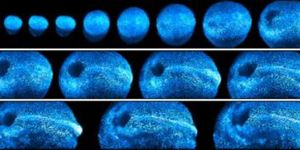Computational Technology Uses Genetics To Solve Crime
When detectives tracked down the Golden State Killer, who terrorized the state of California during the 1970s and 1980, they used an online genealogical database to pin the serial killer. Such ending to the case reinforced the idea that genetic ancestry database systems may help police solve crimes. Now, according to research published in Cell, a computational model can link individuals in an ancestry database to those in law-enforcement databases.

However, the ancestry genetic database utilizes a different genetic marker system than the one used by law-enforcement. "There's a legacy problem in that so many DNA profiles have been collected with this older genetic marker system that's been used by law enforcement since the 1990s. The system is not designed for the more challenging queries that are currently of interest, such as identifying people represented in a DNA mixture or identifying relatives of the contributor of a DNA sample," explains senior author and Stanford University professor, Noah Rosenberg. "In this study, we were trying to pose the question of whether a newer, more modern system of genetic markers could be tested against the old system and still get matches and find relatives."
More specifically, the database used by the FBI and as well as other law-enforcement agencies are known as the Combined DNA Index System (CODIS) which depends on the short tandem repeat (STR) markers, (a type of copy-number variation) in noncoding regions of the DNA. In contrast, ancestry databases depend on the differences in single-nucleotide polymorphisms (SNPs) across hundreds of thousands of sites in the genome.
The research is looking at whether the same methodology of connecting family members can be used to find criminals. The results showed that an individual analyzed for STR markers and SNP markers will link about 30%-32% of parent-offspring pairs and 35%-36% of sibling pairs.
"We wanted to examine to what extent these different types of databases can communicate with each other," says Rosneberg. "It's important for the public to be aware that information between these two types of genetic data can be connected, often in unexpected ways. We have shown that the investigative reach of forensic STR profiles might be possible to expand beyond what was previously believed to be the limit.”
The researchers do note policy-relevant issues in their paper concerning the expansion of capability to change the calculation about who is accessible to detectives during the database search. This is needed to avoid the over-representation of certain populations in law-enforcement STR databases. "There has already been a lot of legal analysis on how STR databases are used," Rosenberg says. "With this study, we suggest that SNP databases and their links to STR databases should also be considered in that analysis."
Source: Cell Press, Cell








